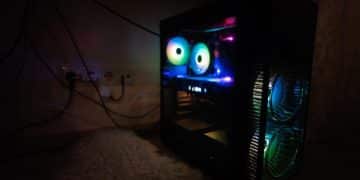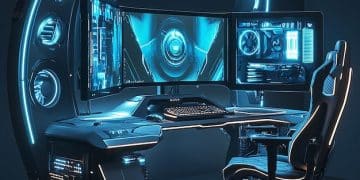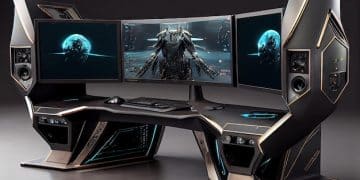The Ultimate Guide to Overclocking CPU & GPU for Free PC Game Performance (2025)
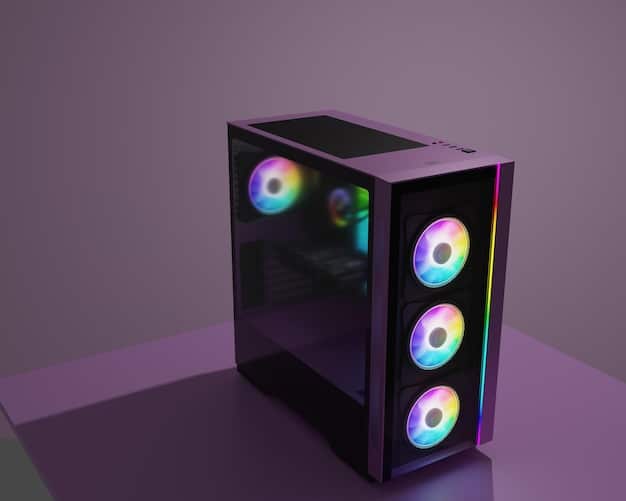
The Ultimate Guide to Overclocking Your CPU and GPU for Free Performance Gains in PC Games (2025) teaches you how to safely boost your CPU and GPU speeds, improving your gaming framerates without spending extra money, by using software tools and understanding your hardware’s limits.
Want to squeeze every last drop of performance out of your PC games without spending a dime? The Ultimate Guide to Overclocking Your CPU and GPU for Free Performance Gains in PC Games (2025) can help you unlock hidden potential.
What is Overclocking and Why Do It?
Overclocking, at its core, is the practice of pushing your computer components beyond their factory-set speeds.
It’s like giving your CPU and GPU a shot of adrenaline, allowing them to process more data and render frames faster. This can translate into smoother gameplay, higher frame rates, and an overall more enjoyable PC gaming experience.
The Benefits of Overclocking
The most obvious benefit is increased performance. By overclocking, you can potentially achieve frame rates that rival those of more expensive hardware.
It’s essentially free performance, maximizing the value of your existing components.
- Increased Frame Rates: Experience smoother gameplay in your favorite titles.
- Enhanced Responsiveness: Reduce input lag and enjoy a more reactive gaming experience.
- Extending Hardware Lifespan: Breathe new life into older hardware, delaying the need for upgrades.
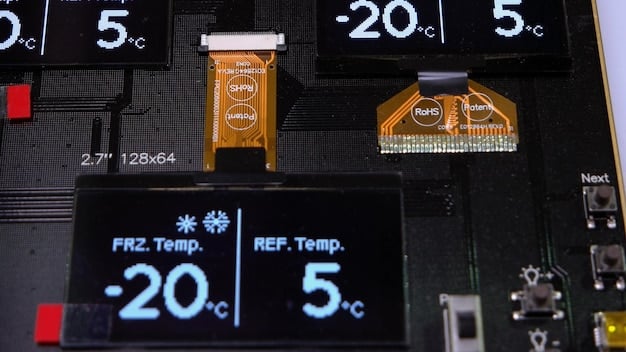
The Risks of Overclocking
While the benefits are enticing, it’s crucial to understand the potential risks involved.
Overclocking generates more heat, which can shorten the lifespan of your components if not managed properly.
- Overheating: Excessive heat can lead to instability and hardware damage.
- Instability: Overclocking too aggressively can cause crashes and system errors.
- Voided Warranties: Some manufacturers may void warranties if components are overclocked.
In summary, Overclocking offers a tantalizing path to improved gaming performance, but it demands a careful and informed approach to avoid potential pitfalls.
Preparing Your System for Overclocking
Before diving into overclocking, it’s essential to ensure your system is properly prepared.
This involves monitoring your components’ temperatures and making sure you have adequate cooling solutions in place.
Monitoring Temperatures
Keeping an eye on your CPU and GPU temperatures is crucial during overclocking. Several software tools can help you track these metrics in real time.
These tools provide valuable insights into how your components are handling the increased workload and help you identify potential overheating issues.
Essential Software Tools for Monitoring:
- HWMonitor: A comprehensive hardware monitoring tool that displays temperatures, voltages, and fan speeds.
- MSI Afterburner: Primarily designed for GPU overclocking, it also provides robust temperature monitoring capabilities.
- CPU-Z: Offers detailed information about your CPU, including its current clock speed and temperature.
Upgrading Your Cooling Solutions
Stock coolers are often insufficient for overclocking, as they are designed to handle the components’ base clock speeds.
Investing in aftermarket cooling solutions is essential to dissipate the additional heat generated during overclocking. These offer improved heat dissipation and can help maintain stable temperatures.
- CPU Coolers: Liquid coolers (AIOs) or high-performance air coolers are recommended for CPU overclocking. The cooler the cooling solution, the better.
- GPU Coolers: While you can’t directly replace a GPU’s cooler without voiding its warranty, ensuring good case airflow is crucial.
- Case Fans: Strategically placed case fans can improve overall airflow and help exhaust hot air from the system.
Preparing your system with adequate cooling and monitoring tools is a crucial first step in ensuring a successful and safe overclocking experience.
Overclocking Your CPU
Overclocking your CPU can significantly improve your system’s overall performance, particularly in CPU-intensive games and applications.
This section will guide you through the process, covering BIOS settings and software-based overclocking methods.
Accessing the BIOS
The BIOS (Basic Input/Output System) is the primary interface for adjusting CPU settings. To access the BIOS, you typically need to press a specific key (usually Del, F2, or F12) during the system startup process.
The exact key may vary depending on your motherboard manufacturer. Consult your motherboard manual for the correct key.
Adjusting CPU Multiplier and Voltage
Once in the BIOS, navigate to the overclocking or advanced CPU settings section. Here, you can adjust the CPU multiplier and voltage, which are the primary factors influencing the CPU’s clock speed.
Start by increasing the multiplier in small increments and testing the system’s stability after each adjustment.
Software-Based Overclocking
- Intel XTU (Extreme Tuning Utility): Intel’s official overclocking tool for Intel CPUs.
- AMD Ryzen Master: AMD’s software for overclocking Ryzen CPUs.
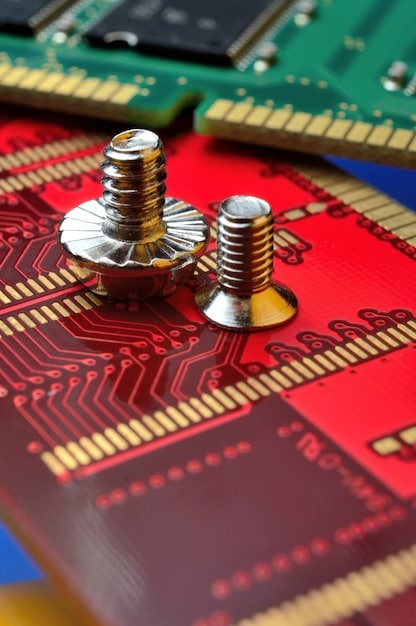
In conclusion, Overclocking your CPU can unlock significant performance gains, but it requires a methodical approach and careful monitoring to ensure stability and prevent overheating.
Overclocking Your GPU
Overclocking your GPU can provide a noticeable boost in gaming performance, especially in graphically demanding titles.
This section will explore how to overclock your GPU using software tools like MSI Afterburner.
Using MSI Afterburner
MSI Afterburner is a popular and versatile tool for overclocking GPUs from both NVIDIA and AMD.
It allows you to adjust core clock, memory clock, voltage, and fan speeds, giving you precise control over your GPU’s performance.
Adjusting Core Clock and Memory Clock
Start by gradually increasing the core clock in small increments (e.g., 10-20 MHz) and testing the system’s stability after each adjustment.
If you encounter instability, reduce the core clock until the system is stable. Once you’ve found a stable core clock, you can then begin overclocking the memory clock.
Monitoring Stability and Artifacts
During GPU overclocking, it’s crucial to monitor for visual artifacts, which are signs of instability.
These artifacts can manifest as strange patterns, flickering textures, or distorted images on the screen. Artifacts indicate that the GPU is being pushed too hard and needs to be scaled back.
In short, Overclocking your GPU can yield significant performance improvements in gaming, but it’s essential to proceed with caution and monitor for stability issues.
Testing Stability and Monitoring Results
After overclocking your CPU or GPU, it’s crucial to thoroughly test the system’s stability to ensure the overclock is reliable and won’t cause crashes or data corruption.
This section will cover various stress-testing tools and monitoring techniques.
Stress-Testing Tools for CPU
Stress-testing tools push your CPU to its limits, simulating heavy workloads and revealing any instability issues.
These tools can help you identify potential problems before they manifest during regular use, preventing crashes and data loss.
- Prime95: A popular stress-testing tool that utilizes various mathematical algorithms to heavily load the CPU.
- AIDA64 Extreme: A comprehensive system information and diagnostics tool that includes a stress-testing module.
- IntelBurnTest: A simple and effective stress-testing tool specifically designed for Intel CPUs.
Stress-Testing Tools for GPU
GPU stress tests are crucial for verifying the stability of your overclocked graphics card.
These tests simulate demanding gaming scenarios and push the GPU to its thermal limits, revealing any instability or artifacting issues.
- FurMark: A popular GPU stress-testing tool that generates intense heat and pushes the GPU to its maximum power consumption.
- 3DMark: A benchmarking suite that includes various stress tests designed to evaluate GPU stability.
- Unigine Heaven/Valley: Graphics benchmarks that can be used to stress-test the GPU and monitor for visual artifacts.
Monitoring Temperatures During Stress Tests
Continuously monitor CPU and GPU temperatures during stress tests to ensure they remain within safe limits.
If temperatures exceed the recommended maximum, reduce the overclock or improve cooling solutions to prevent potential hardware damage.
To summarize, Rigorous stability testing is paramount to ensure your overclocked system operates reliably and doesn’t lead to crashes or hardware damage.
Troubleshooting Common Overclocking Issues
Overclocking isn’t always a smooth process, and you may encounter various issues along the way.
This section will address some common problems and provide troubleshooting tips.
System Crashes and Freezes
System crashes and freezes are common symptoms of an unstable overclock.
These issues typically occur when the CPU or GPU is pushed beyond its limits, resulting in errors and system instability.
- Reduce Overclock: Lower the CPU or GPU clock speeds and retest for stability.
- Increase Voltage: Increasing the voltage slightly can sometimes stabilize an overclock, but be cautious not to exceed safe voltage limits.
- Check Temperatures: Ensure that CPU and GPU temperatures are within acceptable ranges.
Blue Screen of Death (BSOD)
A Blue Screen of Death (BSOD) is a critical error that indicates a serious problem with the system.
BSODs during overclocking often point to memory errors or CPU instability. A BSOD indicates a hardware or driver issue that needs immediate attention.
Visual Artifacts on the Screen
Visual artifacts, such as strange patterns or distorted images, are common signs of GPU instability.
These artifacts indicate that the GPU is being pushed too hard and needs to be scaled back. Artifacts occur when the GPU’s memory or core clock is too high, resulting in rendering errors.
In essence, Troubleshooting overclocking issues requires a systematic approach, starting with identifying the symptoms and then systematically addressing potential causes like instability, overheating, or voltage issues.
| Key Point | Brief Description |
|---|---|
| 🚀 Overclocking Benefits | Boosts performance for smoother gaming without extra costs. |
| 🌡️ Temperature Monitoring | Essential to prevent overheating and hardware damage during overclocking. |
| 🛠️ Software Tools | Use tools like MSI Afterburner and Ryzen Master for overclocking. |
| ⚠️ Stability Testing | Crucial to ensure the overclock is reliable and won’t cause crashes. |
FAQ
▼
Overclocking is the process of running computer components, like CPUs and GPUs, at speeds higher than their factory settings to improve performance.
▼
Overclocking can be safe if done correctly. It requires careful monitoring of temperatures and voltages to avoid damaging hardware components.
▼
Essential tools include hardware monitoring software (e.g., HWMonitor), overclocking utilities (e.g., MSI Afterburner), and stress-testing applications (e.g., Prime95).
▼
Use monitoring software like HWMonitor or MSI Afterburner to track CPU and GPU temperatures in real-time. Keep temperatures within safe limits.
▼
Common signs include system crashes, freezes, Blue Screen of Death (BSOD) errors, and visual artifacts on the screen during gaming or stress tests.
Conclusion
In conclusion, overclocking your CPU and GPU can be a rewarding endeavor, providing free performance gains for PC gaming. By understanding the principles, preparing your system, and carefully monitoring your components, you can unlock hidden potential and enjoy a smoother, more responsive gaming experience without breaking the bank.
